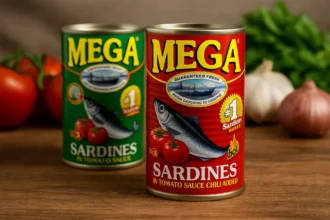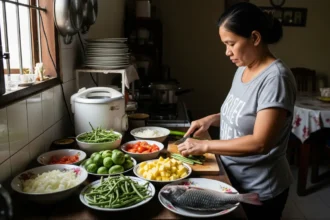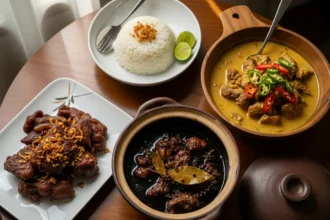Food is memory for Filipinos. A bowl of sinigang can take you back to rainy afternoons at lola’s house. Adobo brings to mind family lunches after Sunday mass. Halo-halo? That’s every childhood summer in a glass. These comfort foods are part of our cultural DNA, the meals that make us feel at home no matter where we are.
- 🍖 Adobo – The National Comfort Food
- 🍋 Sinigang – Sour and Comforting
- 🍛 Kare-Kare – Rich and Creamy
- 🍜 Pancit Canton – For Every Occasion
- 🍗 Fried Chicken – Pinoy Style
- 🍮 Leche Flan – Sweet Indulgence
- 🍧 Halo-Halo – Summer Classic
- 🥩 Tapsilog – Breakfast Favorite
- 🍵 Lugaw / Arroz Caldo – Rainy Day Classic
- 📊 Table: Classic vs Healthier Filipino Comfort Foods
- Final Reflection: Comfort vs Health ❤️
- 🥗 References
But here’s the dilemma: many of these dishes, while delicious, are loaded with sodium, fat, or sugar. In a country where heart disease, diabetes, and hypertension are leading health issues, even comfort food has to be rethought. The good news? You don’t have to give them up. By making smart swaps, Filipinos can enjoy healthier versions without losing the soul of the dish.
This guide explores ten of the most iconic Filipino comfort foods and their modern, healthier versions. We’ll show you how to keep the flavor while cutting back on what makes doctors shake their heads. Ready to eat smarter without giving up your Pinoy favorites? Let’s dig in.
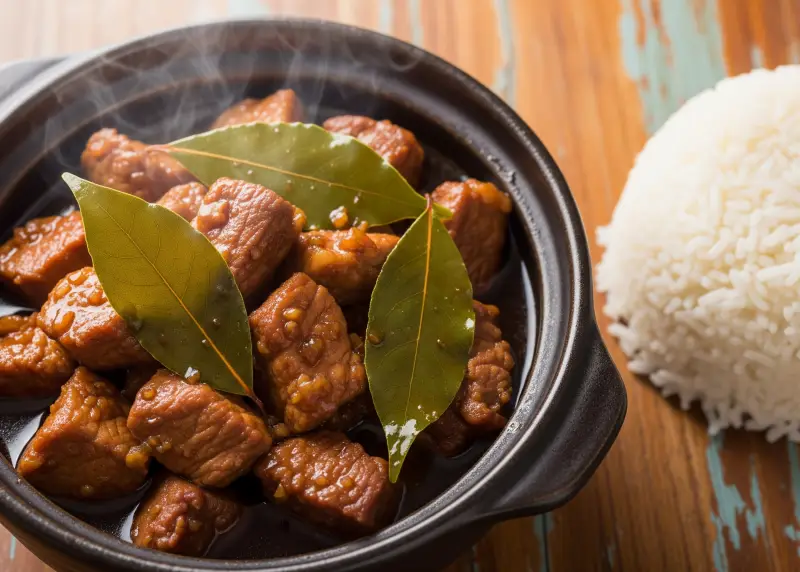
🍖 Adobo – The National Comfort Food
Adobo is undeniably the king of Filipino dishes. The familiar, comforting aroma of soy sauce, vinegar, garlic, and bay leaves simmering with pork or chicken is the scent of home for millions. The challenge with the classic recipe is its reliance on fatty pork cuts like liempo (pork belly), which are high in saturated fats that can contribute to elevated cholesterol levels. For a healthier take, swap the pork belly for skinless chicken breast or thigh, which significantly cuts down the fat content while still absorbing the rich adobo flavor. For a plant-based twist, firm tofu or shiitake mushrooms make excellent substitutes, offering a meaty texture. Using low-sodium soy sauce and consciously reducing the amount of oil for searing makes a massive difference without sacrificing the iconic tangy-savory balance.
- Flavor Tip: To deepen the flavor without increasing salt, marinate your chosen protein for a few hours or even overnight. This allows the meat or tofu to absorb the marinade’s essence, giving you a richer taste without needing extra soy sauce.
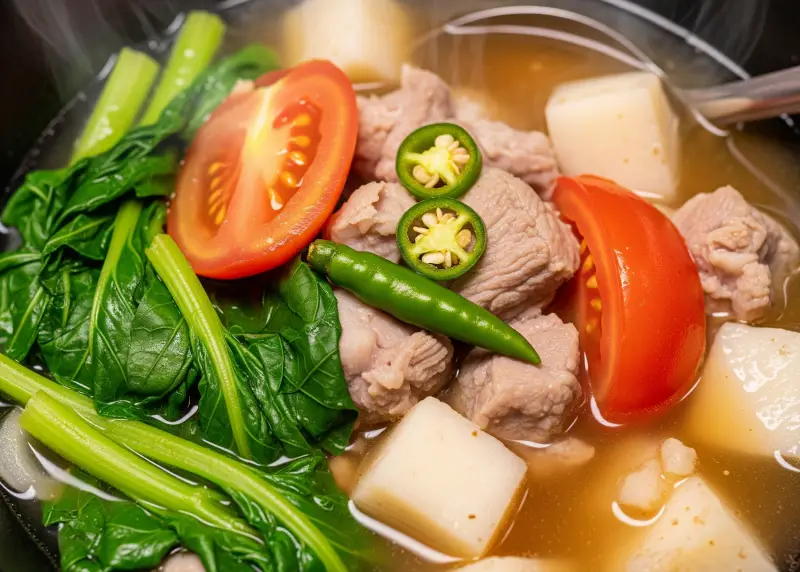
🍋 Sinigang – Sour and Comforting
Nothing beats the soul-soothing warmth of a bowl of sinigang on a rainy day. This iconic sour soup, typically made with a tamarind broth, a medley of vegetables, and a choice of protein, is pure comfort. However, traditional versions using fatty pork cuts can be heavy on the arteries, contributing to unhealthy cholesterol levels. A much healthier version involves choosing leaner proteins like bangus (milkfish), shrimp, or even salmon belly, which provides heart-healthy omega-3 fatty acids. Load the broth with more vegetables like kangkong (water spinach), sitaw (string beans), labanos (radish), and okra to boost your fiber and vitamin intake. Instead of relying solely on commercial sinigang mixes, which are often high in sodium, use natural tamarind pulp, guava, or calamansi to achieve that signature sourness.
- Why It Works: You retain the beloved sour punch and comforting warmth of the soup, but your bowl is transformed into a heart-friendly, nutrient-dense meal packed with vitamins and fiber.
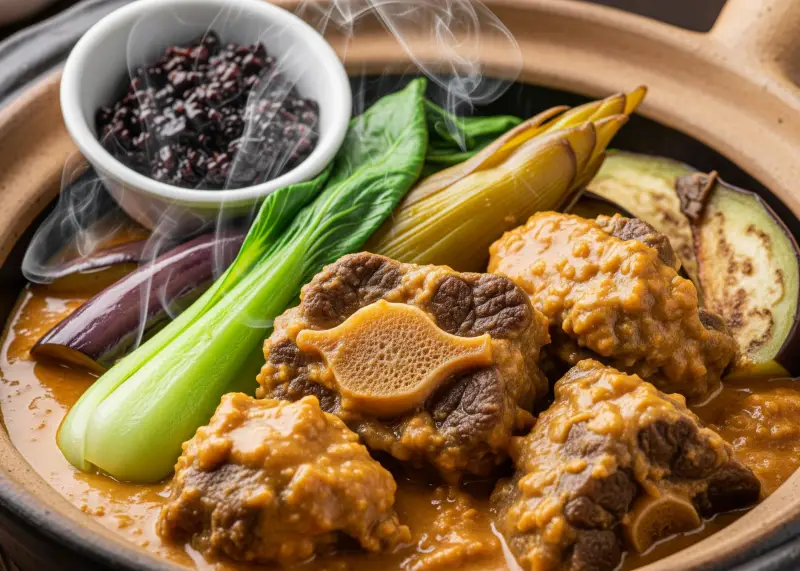
🍛 Kare-Kare – Rich and Creamy
Kare-kare is the undeniable star of fiestas and family gatherings, celebrated for its luxuriously thick peanut sauce, tender meat, and essential side of bagoong (shrimp paste). The health challenge lies in its traditional ingredients: oxtail and tripe are fatty cuts of meat, and the peanut sauce can be laden with calories, sugar, and unhealthy fats. To create a healthier version, switch to lean cuts of beef like sirloin, skinless chicken, or even seafood like shrimp and mussels. Instead of commercial peanut butter, use unsweetened, natural peanut butter or grind your own roasted peanuts to control the sugar and avoid hydrogenated oils. Finally, treat the bagoong as a powerful condiment-use just a small amount on the side for that salty-umami kick without overloading on sodium.
- Substitution Trick: For a lighter, creamier sauce that still feels indulgent, some modern Filipino cooks now use ground cashew nuts or almonds instead of peanuts.

🍜 Pancit Canton – For Every Occasion
A staple at every birthday party and celebration, pancit canton is synonymous with wishes for a long life. The classic stir-fried noodle dish is delicious, but versions made with instant pancit canton packets are notoriously high in sodium, MSG, and preservatives. To make it healthier, start by swapping the instant noodles for fresh egg noodles or rice-based noodles like bihon. The key to a better pancit is to overload it with a colorful variety of vegetables-cabbage, carrots, bell peppers, snow peas, and sayote not only add nutrients and fiber but also make the dish more filling. For your protein, choose lean chicken breast strips, shrimp, or tofu instead of processed meats like sausage or kikiam.
- Why It’s Better: You still get to enjoy the festive, comforting noodle dish everyone loves, but you’re in full control of the ingredients, slashing the sky-high sodium and additives found in instant mixes.
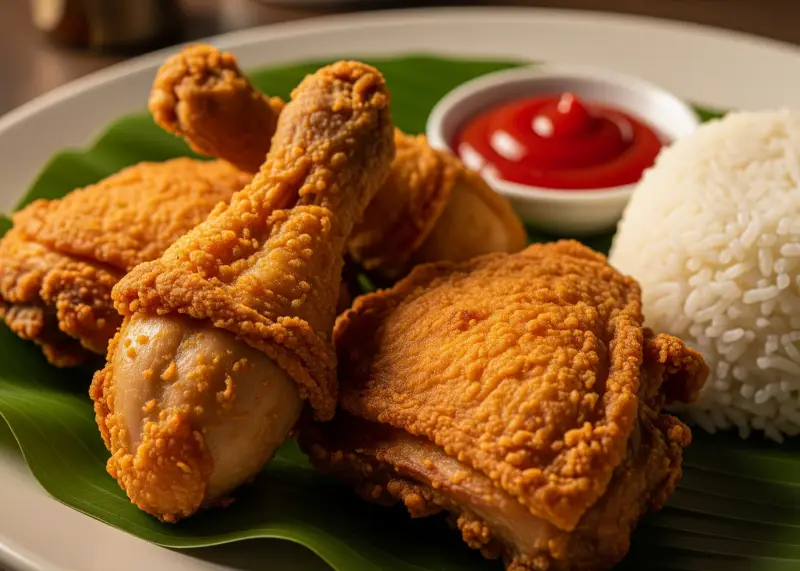
🍗 Fried Chicken – Pinoy Style
Ask any Filipino kid what their favorite ulam is, and you’ll likely hear “fried chicken!” Crispy, golden, and perfectly paired with rice and gravy, it’s the ultimate comfort food. The downside is that deep-frying, especially in oil that has been reused multiple times, creates a dish high in unhealthy fats and calories. A fantastic modern solution is to use an air fryer, which circulates hot air to achieve a crispy skin with just a light brush of oil. Alternatively, you can oven-bake the chicken on a wire rack, which allows the excess fat to drip away. Elevate the flavor by marinating the chicken in a mix of calamansi, garlic, pepper, and herbs instead of relying on store-bought breading mixes that are often full of salt and MSG.
- Extra Tip: To make the meal more balanced and increase your fiber intake, pair your healthier fried chicken with brown or red rice instead of white rice.
🍮 Leche Flan – Sweet Indulgence
No Filipino fiesta or celebration is truly complete without the iconic leche flan. This silky, rich custard with its blanket of caramel syrup is a decadent treat. However, its traditional recipe, which calls for numerous egg yolks, condensed milk, and refined sugar, makes it one of the most calorie-dense desserts. For a lighter but still delicious version, you can use stevia or coconut sugar as a sweetener and swap the condensed milk for low-fat evaporated milk to reduce both sugar and fat. You can also try baking the flan in a water bath instead of steaming it, which requires less caramel syrup on top. Above all, portion control is key-serving the flan in smaller individual ramekins instead of a large llanera helps manage indulgence.
- Health Bonus: While it changes the classic texture slightly, using a mix of whole eggs and egg whites instead of only yolks can significantly cut down on cholesterol while still producing a smooth, silky custard.
🍧 Halo-Halo – Summer Classic
Halo-halo is pure joy in a tall glass, a delightful mix of crushed ice, sweet beans, gulaman, sago, ube halaya, leche flan, milk, and a scoop of ice cream. It’s the ultimate summer cooler, but the sugar load from all the sweetened components can be incredibly high. To create a healthier version, shift the focus to fresh, natural fruits. Use generous amounts of sliced bananas, ripe mangoes, jackfruit, and melon as your base. Instead of condensed or evaporated milk, drizzle coconut milk or unsweetened almond milk for creaminess. For the topping, skip the ice cream and opt for a scoop of shaved frozen fruit purée (like mango or banana) to provide that sweet, creamy finish without the refined sugar.
- Fun Twist: Many modern cafes are reinventing halo-halo as a smoothie bowl. It features the same colorful toppings but is built on a lighter, fruit-forward base, making it a refreshing and guilt-free treat.
🥩 Tapsilog – Breakfast Favorite
The beloved tapsilog-a hearty plate of tapa (cured beef), sinangag (garlic fried rice), and itlog (egg)-is a breakfast of champions for many Filipinos. While delicious, the traditional preparation can be high in sodium from the tapa marinade and heavy on oil from frying both the rice and the egg. To make it a healthier start to your day, use lean beef sirloin for your tapa and marinate it in a mixture of calamansi, garlic, and black pepper with just a minimal amount of soy sauce. For the rice, switch to brown rice garlic fried rice, using only a small amount of olive oil. Finally, instead of frying the egg, you can poach or boil it to eliminate the extra oil altogether.
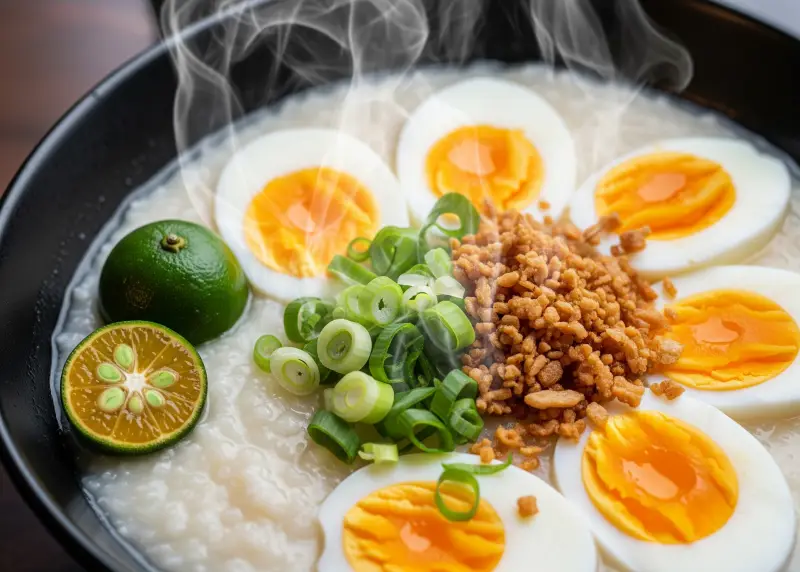
🍵 Lugaw / Arroz Caldo – Rainy Day Classic
Nothing says comfort like a warm bowl of lugaw or arroz caldo, especially during a fever or on a cool, rainy evening. The rice porridge itself is a simple, light, and easily digestible base. The health challenge often comes from the toppings, which can be loaded with oil and salt, such as deep-fried garlic bits, crispy chicken skin, chicharon, and generous dashes of patis (fish sauce). To keep it healthy, use lean, shredded chicken breast and enrich the porridge by adding nutritious greens like malunggay leaves or pechay. Be mindful with the patis, using just enough for flavor. For a crunchy topping, use toasted garlic made with a tiny bit of olive oil instead of deep-fried bits.
- Pro Tip: Lugaw is a naturally wholesome food. The key to keeping it healthy is to simplify the toppings. A boiled egg, a sprinkle of spring onions, and a squeeze of calamansi are all you need for the ultimate guilt-free comfort food.
📊 Table: Classic vs Healthier Filipino Comfort Foods
| Dish | Classic Version | Healthier Version |
|---|---|---|
| Adobo | Pork belly, soy sauce, lots of oil | Chicken breast/tofu, low-sodium soy, less oil |
| Sinigang | Pork ribs with sinigang mix | Fish/shrimp with real tamarind, more veggies |
| Kare-Kare | Oxtail/tripe, sweet peanut butter | Lean beef/seafood, natural/unsweetened peanuts |
| Pancit Canton | Instant noodles, processed meats | Egg/rice noodles, chicken/shrimp, more veggies |
| Fried Chicken | Deep fried in reused oil | Air-fried or oven-baked, calamansi marinade |
| Leche Flan | Condensed milk, white sugar, yolks | Low-fat milk, coco sugar, egg whites |
| Halo-Halo | Ice cream, leche flan, condensed milk | Fresh fruits, coconut milk, frozen fruit purée |
| Daing na Bangus | Deep fried, salty marinade | Grilled/air-fried, light calamansi marinade |
| Tapsilog | Salty beef, white garlic rice, fried egg | Lean beef, brown rice, poached/low-oil egg |
| Lugaw | Patis-heavy, fried chicken skin | Lean chicken, malunggay, light toppings |
Final Reflection: Comfort vs Health ❤️
Food is never just fuel for Filipinos – it’s a way of bonding, celebrating, and remembering. That’s why comfort foods hold such a powerful place in our culture. But comfort doesn’t have to mean unhealthy. By making small changes – like swapping pork belly for chicken, white rice for brown, or condensed milk for coconut milk – we keep the joy of eating without the long-term health risks.
Here’s the truth: no one is saying you should never eat classic lechon kawali or a full-fat leche flan again. What matters is balance. Enjoy the traditional versions occasionally, but let the healthier versions be your everyday go-to. This way, you protect your health while keeping Filipino food traditions alive.
As Pinoys say, “basta’t may rice, may ulam, at may kasama, masarap ang kainan.” The healthier swaps simply ensure we can enjoy those meals for many more years to come.
🥗 References
-
The Peach Kitchen – Healthy Filipino Comfort Food: Classic Recipes Made Better
-
Ang Sarap – Kickstart the New Year: 18 Healthy Filipino Dishes
-
Grace Banal Dietitian – Meal Plans for Busy Pinoys
-
MakatiMed – Yes, You Can Have Pinoy Food – And A Healthy Heart
-
Ajinomoto PH – 5 Must-Try Healthy and Affordable Pinoy Ulam
-
Food for Fitness – 20 Tasty Filipino Recipes You Must Try




